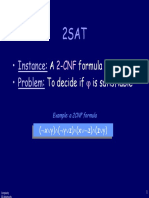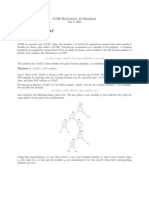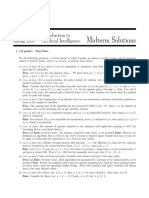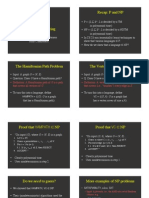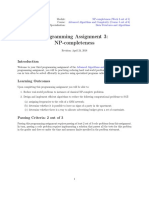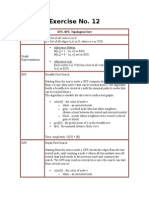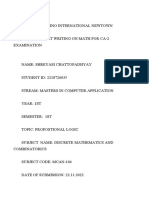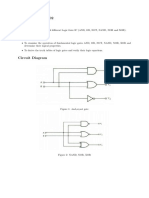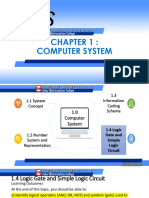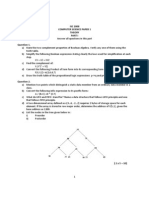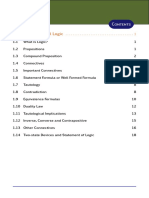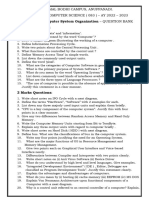0% found this document useful (0 votes)
154 views35 pages2SAT in Graph Theory for Programming
This document provides an overview of solving 2-satisfiability (2SAT) problems using graph theory concepts like implication graphs, strongly connected components (SCCs), and topological sorting. It describes both a slow approach of building an implication graph and checking for cycles, as well as a faster approach using Tarjan's algorithm to find SCCs and assign variable values in reverse topological order of the component graph. The document provides examples and pseudocode for both approaches.
Uploaded by
Khalid MosaadCopyright
© © All Rights Reserved
We take content rights seriously. If you suspect this is your content, claim it here.
Available Formats
Download as PDF, TXT or read online on Scribd
0% found this document useful (0 votes)
154 views35 pages2SAT in Graph Theory for Programming
This document provides an overview of solving 2-satisfiability (2SAT) problems using graph theory concepts like implication graphs, strongly connected components (SCCs), and topological sorting. It describes both a slow approach of building an implication graph and checking for cycles, as well as a faster approach using Tarjan's algorithm to find SCCs and assign variable values in reverse topological order of the component graph. The document provides examples and pseudocode for both approaches.
Uploaded by
Khalid MosaadCopyright
© © All Rights Reserved
We take content rights seriously. If you suspect this is your content, claim it here.
Available Formats
Download as PDF, TXT or read online on Scribd
/ 35




